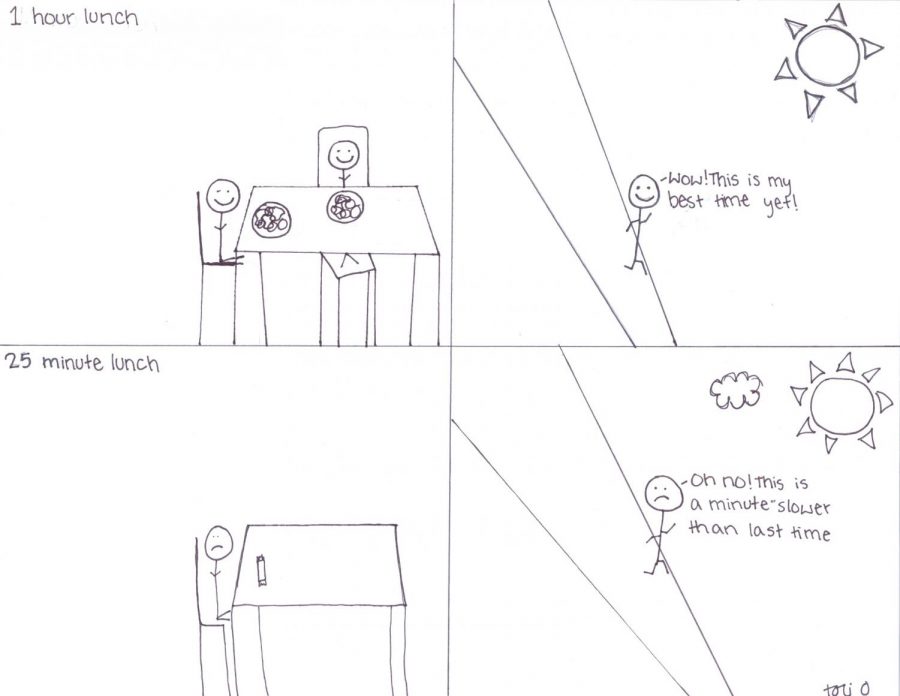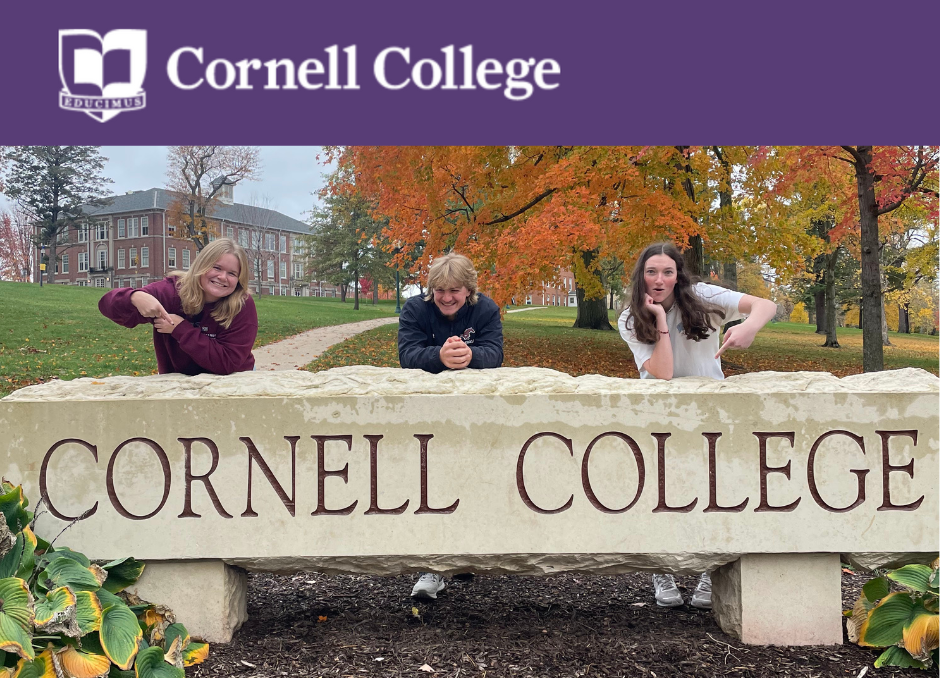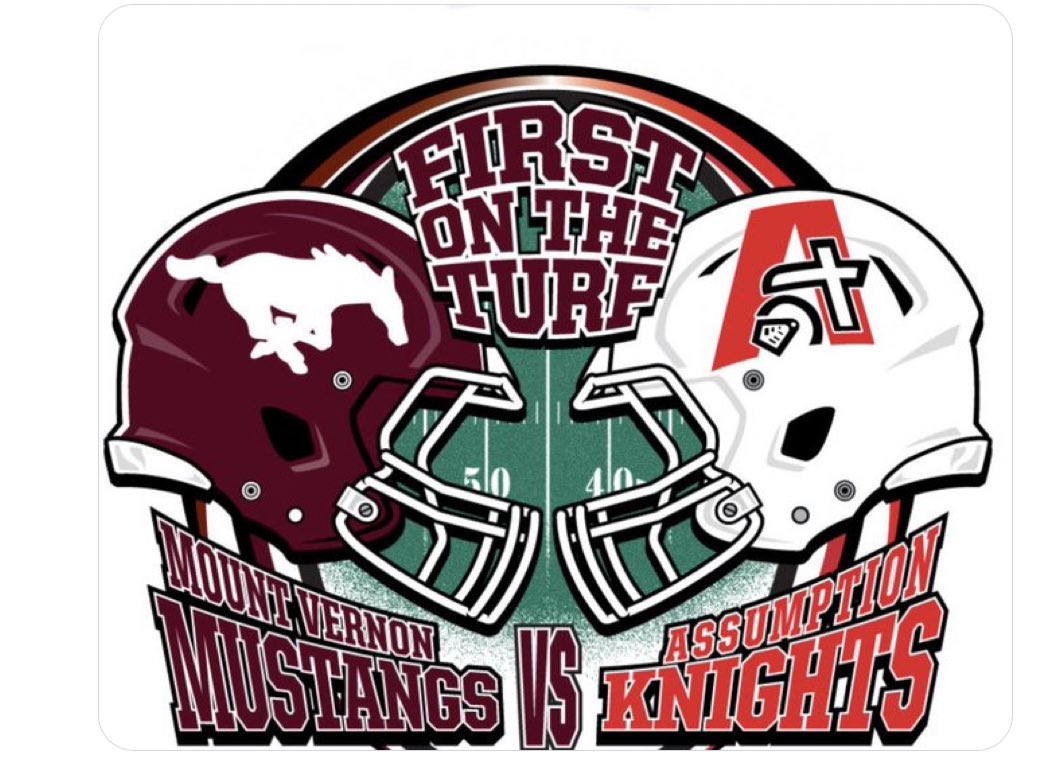School Lunch Should be Longer at MVHS
Food is Fuel
October 5, 2021
Many high school students arrive at school before 7:15 a.m. and don’t go home again until their practice or activity is over at 5:30 p.m. or later. Ten hours is a very long time. Our short lunches do not provide enough time for students to consume an adequate amount of food to provide them with the energy they need for the day.
At Mount Vernon High School, lunch is split into two 25-minute sessions. Half of the students are in class, while the other half eats, and vice versa. However, that does not include the time it takes to travel to the cafeteria, stand in the lunch line, and find a table. After all is said and done, this might leave 20 minutes to eat.
It is hypocritical for the school to emphasize the importance of nutrition and then only give students enough time to scarf down a few apple slices with peanut butter. In addition to teaching unhealthy eating habits, high school students and athletes don’t have enough time to fuel up for very long days where they are expected to perform at their best. Studies show that high school athletes need 2,800-3,200 calories of nutrient dense food per day. Three thousand calories split into three meals is 1,000 calories per meal. To put this into perspective, 1,000 calories equals about six potatoes or 14 eggs. Some students barely finish a bagel, cheese, and grapes from the grab and go in the time allotted – which is neither nutrient dense, nor equal to 1,000 calories.
In addition to physical health, mental health is also affected by such a short lunch break. Socialization is a vital part of a teenager’s life. Lunch is the only built-in break in the day where kids get to relax and decompress with their peers before returning to their scheduled classes. School is not only a place for students to gain academic knowledge, but it is also a place to learn social skills. It is faulty thinking to assume students have additional time or opportunities away from school to spend time with their friends.
There is a simple solution to this issue. In the 2019-2020 school year, WIN and homeroom were combined with lunch. This gave students close to an hour to eat, socialize, do homework, and meet with teachers. Without the added stress of the clock, Students choose healthier options like sub sandwiches, salads, and fruit, instead of quick and easy snacks, like a Rice Crispy Treat from the grab and go line. This additional time provides students a chance to take care of themselves and be at their best while also allowing teachers and administrators a chance to connect with the student body. The overall benefits of this system are a WIN-WIN for everyone involved.











